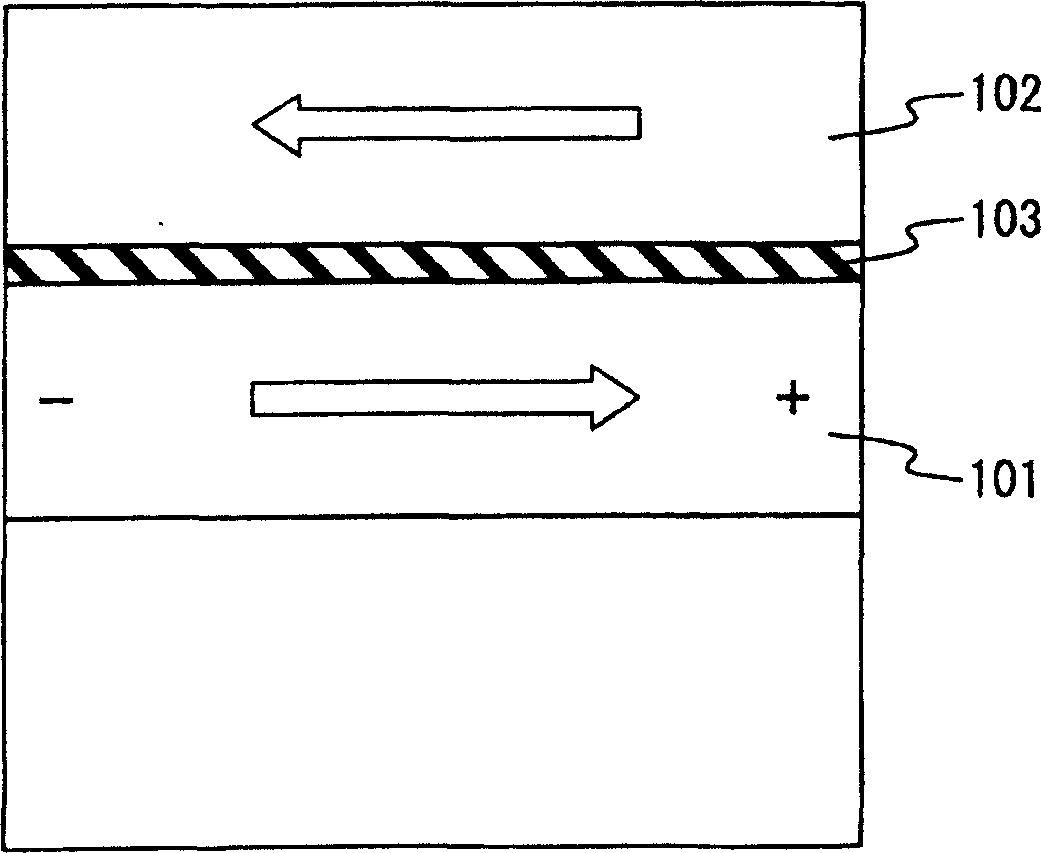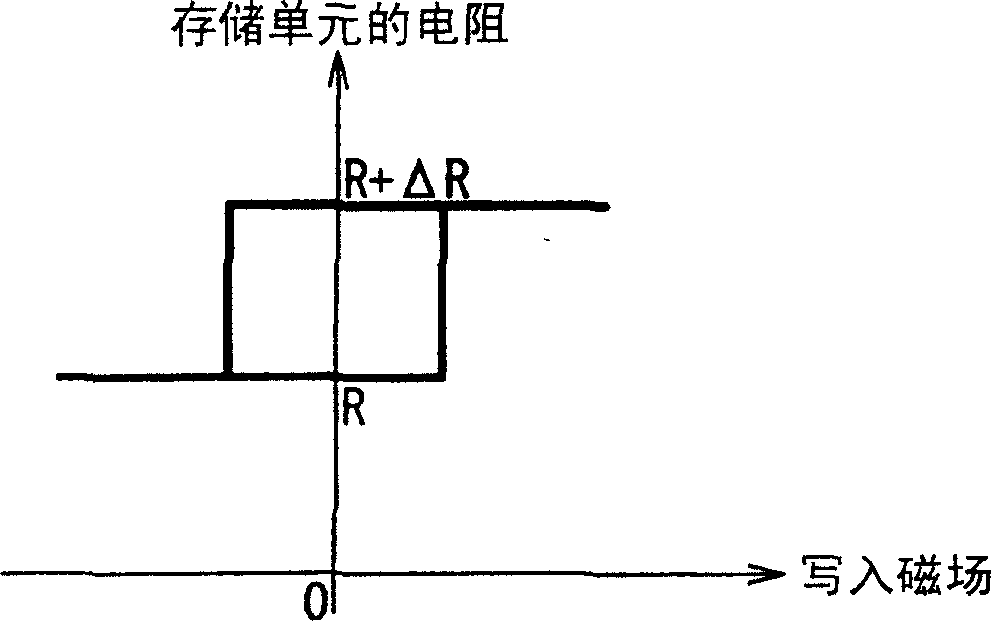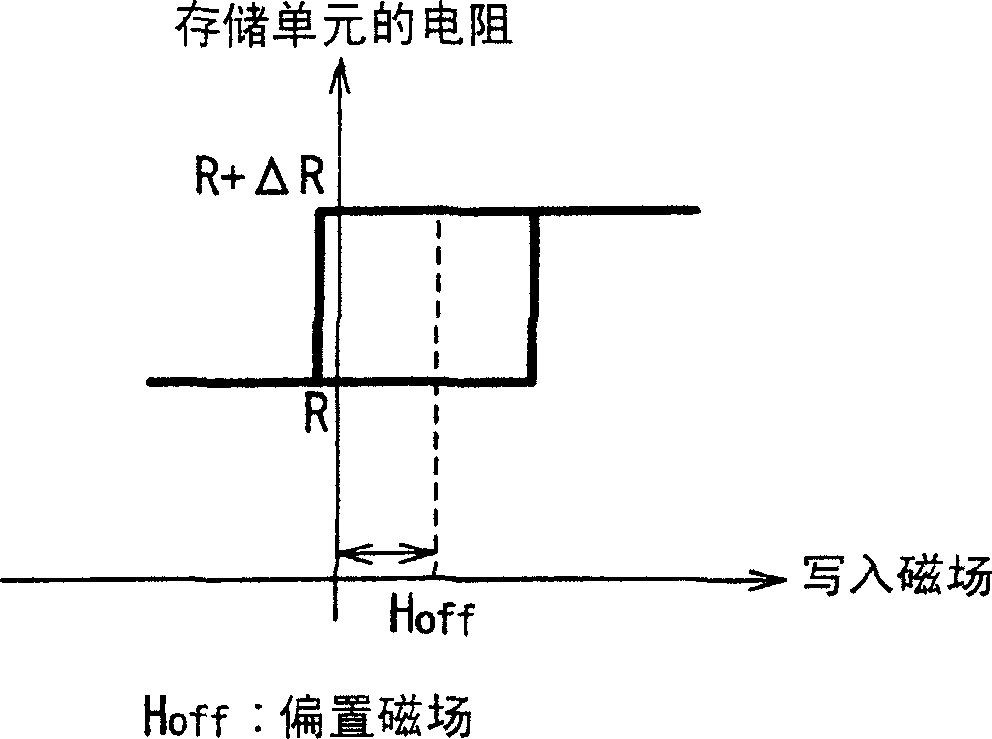Magnetic random access memory
A random access memory, magnetic field technology, applied in static memory, digital memory information, information storage, etc., can solve the problem of not talking about bias magnetic field, and achieve the effect of reducing bias magnetic field and suppressing manufacturing deviation
- Summary
- Abstract
- Description
- Claims
- Application Information
AI Technical Summary
Problems solved by technology
Method used
Image
Examples
no. 1 approach
[0061] Figure 7 The structure of the MRAM according to the first embodiment of the present invention is shown. To help understand the structure, note that Figure 7The aspect ratio values shown for the MRAM structure are different from those of the actual MRAM.
[0062] The MRAM of the first embodiment has a substrate 1 and a lower electrode 2 . A lower electrode 2 is formed on a substrate 1 . Lower electrode 2 includes metal lead layer 3 , seed layer 4 and antiferromagnetic layer 5 . Metal wiring layer 3 is typically formed of Al or Cu. The seed layer 4 is typically formed of a Ta film or a laminated film of Ta and Ru films. The antiferromagnetic layer 5 is formed of an antiferromagnetic material, typically FeMn, IrMn, or PtMn.
[0063] A laminated ferrite fixed layer 6 is formed on the lower electrode 2 . The laminated ferrite fixed layer 6 includes a first pin layer 7, a second pin layer 9, and a non-magnetic spacer layer 8 interposed therebetween. The first pin ...
no. 2 approach
[0102] Figure 11 A second embodiment of the MRAM of the present invention is shown. For ease of understanding, note that Figure 11 The aspect ratio values for the construction of the shown MRAM are different from the actual MRAM.
[0103] In the MRAM of the second embodiment, the orange peel effect and the magnetostatic coupling effect are suppressed by the laminated ferrite pinned layer 6' having a structure different from that of the laminated ferrite pinned layer 6 of the first embodiment.
[0104] The laminated ferrite pinning layer 6' used in the MRAM of the second embodiment includes a first pin layer 7', a plurality of non-magnetic spacer layers 8', and first and second pin layers respectively formed on the non-magnetic spacer layers 8'. Two nail needle layers 9'. The first pin layer 7' and the second pin layer 8' are formed of a ferromagnetic material, and thus have spontaneous magnetization, respectively. The first pinning layer 7' and the second pinning layer...
PUM
 Login to View More
Login to View More Abstract
Description
Claims
Application Information
 Login to View More
Login to View More - Generate Ideas
- Intellectual Property
- Life Sciences
- Materials
- Tech Scout
- Unparalleled Data Quality
- Higher Quality Content
- 60% Fewer Hallucinations
Browse by: Latest US Patents, China's latest patents, Technical Efficacy Thesaurus, Application Domain, Technology Topic, Popular Technical Reports.
© 2025 PatSnap. All rights reserved.Legal|Privacy policy|Modern Slavery Act Transparency Statement|Sitemap|About US| Contact US: help@patsnap.com



